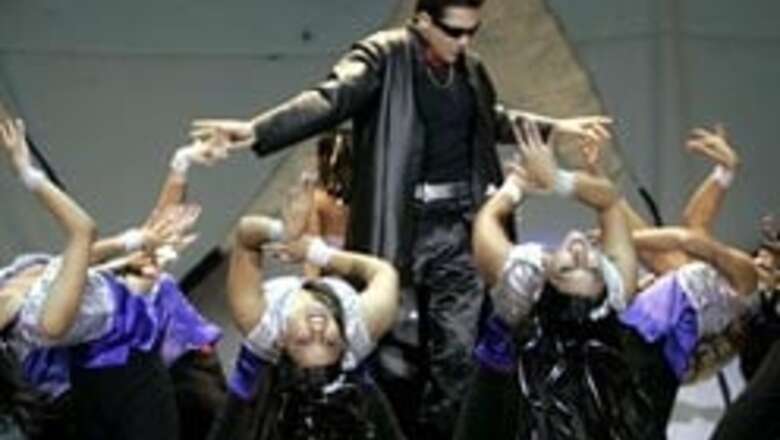
views
Oakland (California): An Indian boy with a suitcase and an "I love NY" T-shirt stumbles onstage, grinning at the New York skyline and the chic Indian-American girls strolling by.
But these American-raised girls want nothing to do with an immigrant fresh from the subcontinent. What's a boy to do?
Dance, of course.
And what better way to dance than in an intercollegiate dance meet. Bollywood dance competitions involve teams of Indian-American college students who bring the music and dance traditions of their forebears into a American world of pre-performance huddles, cheerleading and a thirst for first place.
The dancers act out the challenges of living between cultures through the sugary boy-meets-girl plots and high-energy choreography of the movies they grew up watching.
"It's like a bridge between Hindi and American culture," said 22-year-old Rashi Birla, who dances on the University of California, Los Angeles team. "There's nothing like this in India."
The UCLA team was one of 10 that met recently in a competition held by Indus, the Indian student group at the University of California, Berkeley.
As the dancing began, UCLA's lead performer spun around, revealing that his "I love NY" T-shirt said "I love India more" on the back.
"Let me show you how things are done in India," he said.
A scene later - wearing flashy new costumes glittering with sequins - the new immigrant meets the young Americanised Indian woman at a club.
After eight minutes of frenetic dancing - and yet another wardrobe change - she's in love.
The 1,500 people in the audience roared with approval.
Dance competitions such as Bollywood Berkeley, billed as the biggest in the country, draw on Indian art forms, but clearly they're a cultural composite. Even the choreography mixes the fluttering hands and lateral head weaves of traditional Indian dance with hip-hop and modern dance.
"With all immigrants, there's an effort to re-create oneself in a new environment," said Miriam Ben-Yoseph, a DePaul University researcher whose work touches such issues as "cultural homelessness."
"You become a hybrid of your old culture and the culture that you're joining, you create something you're comfortable with. And your children inherit that mixture and create their new one, because they have more of the new place's stamp on them."
PAGE_BREAK
The Bollywood movies from which the songs and kitschy plots are drawn are mass entertainment in India – fantasy films that "mingle the allure of wealth and luxury around a core of traditional morality," said Robert Goldman, professor at UC Berkeley's Department of South and Southeast Asia Studies.
The rise of popular culture as an academic discipline, which brought analysis of hip-hop and Star Wars to university classrooms, has also led to a recent scholarly examining of Bollywood, said Goldman. But there's still a lingering embarrassment that comes with enjoying these films - a little like the guilty pleasure of watching soap operas.
"It's like junk food," he said. "It's schmaltzy.
You know it's not the most intellectual stuff in the world, but it's fun, it's entertaining."
For Indian-American students reared in the United States, Bollywood dance competitions have become a way to connect with their parents' culture without losing touch with what they see on MTV and elsewhere.
Twenty-year-old Rohit Bal, a management science major at the University of California, San Diego, grew up in a mostly white suburb of Los Angeles, with few other Indians.
"Until college, I was more ... I guess you could call it whitewashed," he said. The dancing "was a window to get in touch with my culture, with my parent's culture, while making it fun for myself."
Approving, Indian-born parents filled the seats closest to the stage.
"He's picking up Indian culture, which he was never into before," said Bindu Amar of her son Karun, part of the UCSD team.
"He was never interested in anything Indian. He'd come home and ask for pizza. All of a sudden, he was part of the team.It was just something he could associate with."
Her attention turned back to the stage, where a young woman had to chose between three suitors. She rejected the Westernised fraternity president and the newcomer fresh from the Indian state of Maharashtra, before settling on the academically accomplished Regent's Scholar. The end, of course, was a happy one.
"In the Indian community, Bollywood is a huge part of people's lives," said 22-year-old Priya Gupta, a UC Berkeley student who helped organise the competition.


















Comments
0 comment